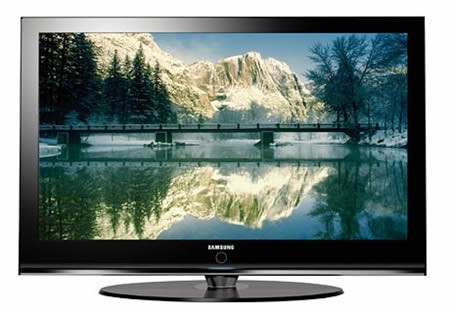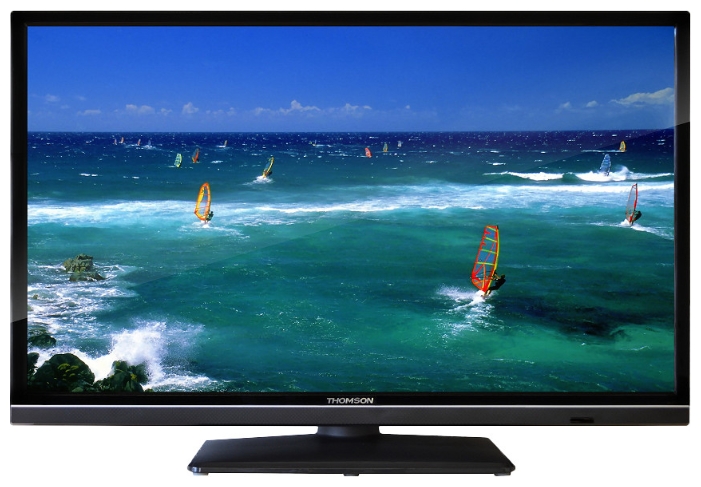Electronic developments are striving forward in huge strides, offering us more and more new, advanced and technologically advanced televisions. Image quality and resolution are getting better, design is getting thinner, and brains are getting smarter. And the buyer has the widest choice, which lies not only in brands, but also in technology: LCD, ice and plasma are offered on the market. What is better and how they differ, now we’ll figure it out.

Plasma panel
Perhaps these televisions were pioneers from the world of new technologies. Even when the “plasma” entered the market, massive sales still fell on the cathode-ray tube televisions, since initially the novelty was quite expensive.
Technologically, the plasma panel consists of two glass plates, between which is enclosed a matrix of cells filled with gas. Transparent electrodes conduct current to the cells, from which the gas turns into a plasma and begins to glow. Plasma ultraviolet radiation causes illumination of the phosphor in red, green and blue. It is these colors in different ratios that the computer controls that we see on TV.
Today, this type of TV is considered obsolete, and plasma models are getting smaller. However, some manufacturers continue to produce plasma panels, improving their quality. Plasma diagonals are large, since on compact models it is impossible to make a high resolution due to large-sized pixels.
The advantages of plasma are:
- deep and bright colors;
- excellent contrast due to perfect black color;
- wide viewing angle up to 180 degrees;
- long service life, the largest among TVs - up to 30 years;
- 3D technology has reached plasma.

But there are also disadvantages:
- highest power consumption;
- the panel sometimes exults in the sun;
- the panel is quite heavy, problems with mounting on the wall;
- pixels on static images burn out.
LCD TV
If we said that plasma panels were the pioneers of new technologies among televisions, then liquid crystals were at the origins of all electronics in general. The first LCD display appeared in the 1970s. Then it was monochrome screens on watches, calculators, various devices. A little later, the first laptops with an LCD display appeared, but they were primitive developments at the very dawn of the LCD era.
The first LCD TVs began to appear in the beginning, and became widespread in the mid-2000s.
Thanks to small diagonals from 14 to 32 inches and an affordable price, they quickly became popular and bypassed the plasma in sales, although at that time they were much inferior in image quality.
The LCD screen is based on liquid crystals, which are located between the layers of glass or polymer plates. This layer of crystals forms a matrix with a huge number of pixels. The backlight behind the panel gives a glow, and the RGB matrix provides colors.

LCD TVs can be fully called the reason for leaving the CRT market (these are those thick boxes with a flickering picture tube). Although the picture tubes were much better in picture quality, new technologies prevailed. Since then, a lot of time has passed, and the quality of the LCD has slightly improved.
We list their advantages:
- low power consumption (remember the clock that runs on the same battery);
- no static voltage - does not attract dust and does not shock;
- even a small screen can be made in Full HD resolution;
- low price;
- light, but today it’s very light.
And disadvantages:
- contrast is worse than that of plasma and ice;
- limited viewing angle;
- insufficient black depth and contrast;
- the only "regular" screen resolution;
- response time, that is, the image change time is not the best.
Of course, the pros and cons vary depending on the cost of a particular model and the level of the manufacturer.For example, premium brands will show excellent contrast, a wide viewing angle, and all other data will be at a high level. And the cheapest models, on the contrary, will exacerbate the shortcomings several times, and their working time is limited. In general, LCD TVs last 7-10 years.
LED TV
In 2010, the so-called LED TVs began to spread. In fact, this is a regular LCD TV, but with some changes. They used LED backlighting, which has brighter light, due to which the brightness of the picture is increased and more natural color reproduction has become. If the LED is off, then it does not create any glow, hence the image contrast has become better, and the black color is completely black. In general, by almost all parameters in the field of image quality, led is ahead of the LCD. Plus, power consumption has been improved.

It is worthwhile to understand that the mere presence of LED backlighting does not give a one hundred percent advantage. As in previous cases, image quality depends on the manufacturer and the technologies implemented by him. The most famous brands, of course, have the latest developments and use the best graphics processors. Second-tier firms have the technology of past generations.
The advantages of such TVs can be considered:
- brightness and clarity;
- great colors, great contrast;
- at high resolution, such as 4K, the picture takes on amazing quality and volume.
Disadvantages:
- as on LCD, limited viewing angle;
- the price is usually biting.
But here it is worth making a digression and revealing a marketing secret. Real LED TVs are not exactly what you just read about. Yes, in all stores, “ice” means ordinary LCDs, but with LED backlighting. True LED displays, however, have a completely different technology. In such devices, each pixel is illuminated by a separate LED. The first such TV was invented back in 1977 and still has not received wide distribution. The fact is that it is extremely difficult to make a compact TV with hundreds of thousands of LEDs at an affordable price. But large panels are quite common in outdoor advertising.
A definite answer, which is better - LCD, plasma or LED, probably, nevertheless, no. As we can see, everyone has both advantages and disadvantages. If you prefer to watch movies in a small room, and sometimes use the TV as a monitor for your PC, then you should definitely look at the LCD. If you have a large dark room, you often watch football matches, and generally prefer not to turn off the TV, then a large plasma is ideal. If you are striving for perfect quality, you will have to fork out for LED. But in any case, you should choose, and we just gave you the direction.